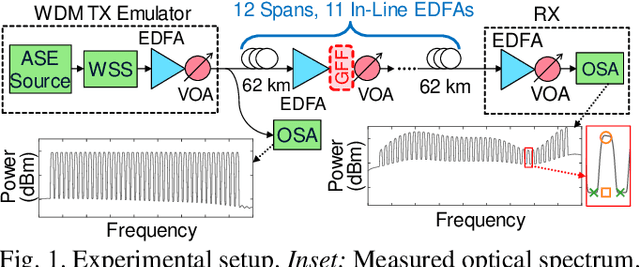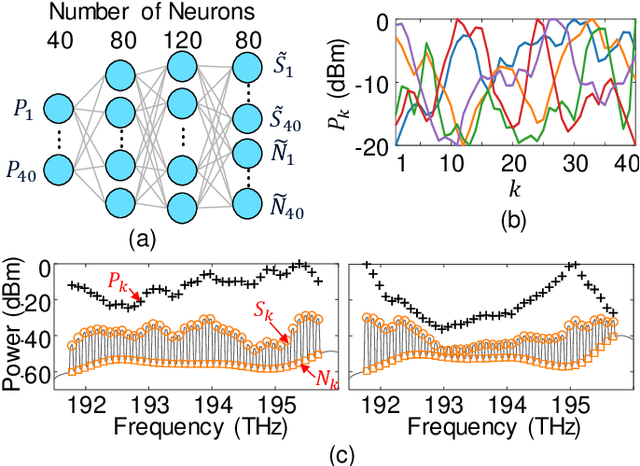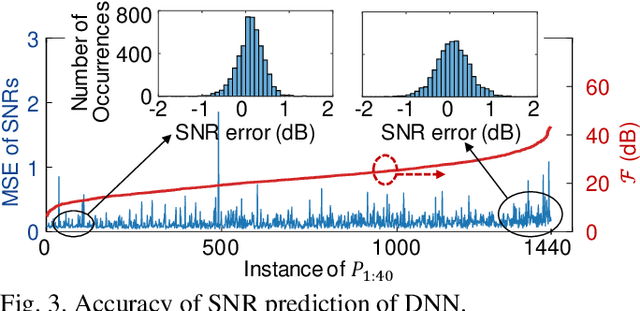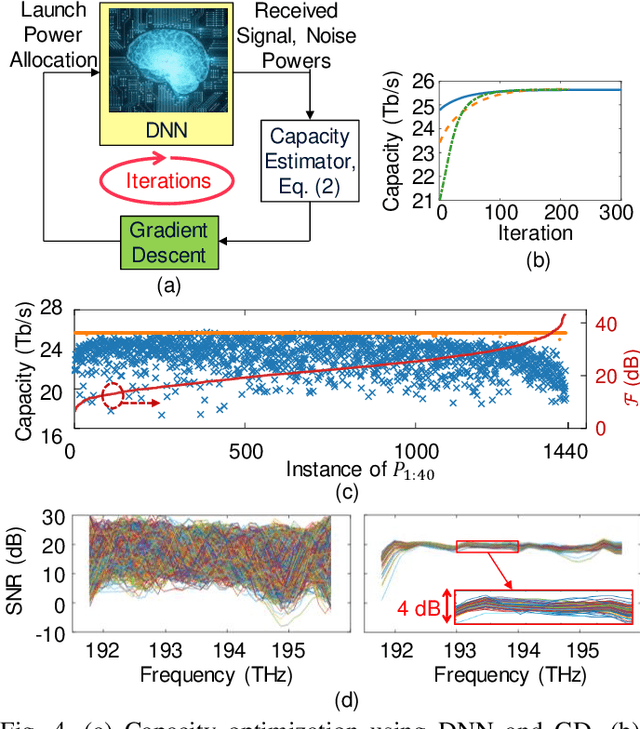Roland Ryf
Global Seismic Monitoring using Operational Subsea Cable
Sep 29, 2024

Abstract:We report tele-seismic waves detection from multiple earthquakes on an operational subsea cable from Iceland to Ireland. Using per-span laser interferometry with 100km spacing, we report clear detection of S-, P- and surface waves from multiple world-wide earthquakes, enabling seismic analysis for early warning applications.
* 3 pages, 2 figures. Conference submission
Net 835-Gb/s/λ Carrier- and LO-Free 100-km Transmission Using Channel-Aware Phase Retrieval Reception
Apr 10, 2024


Abstract:We experimentally demonstrate the first carrier- and LO-free 800G/{\lambda} receiver enabling direct compatibility with standard coherent transmitters via phase retrieval, achieving net 835-Gb/s transmission over 100-km SMF and record 8.27-b/s/Hz net optical spectral efficiency.
Distortion-Aware Phase Retrieval Receiver for High-Order QAM Transmission with Carrierless Intensity-Only Measurements
Oct 09, 2023Abstract:We experimentally investigate transmitting high-order quadrature amplitude modulation (QAM) signals with carrierless and intensity-only measurements with phase retrieval (PR) receiving techniques. The intensity errors during measurement, including noise and distortions, are found to be a limiting factor for the precise convergence of the PR algorithm. To improve the PR reconstruction accuracy, we propose a distortion-aware PR scheme comprising both training and reconstruction stages. By estimating and emulating the distortion caused by various channel impairments, the proposed scheme enables enhanced agreement between the estimated and measured amplitudes throughout the PR iteration, thus resulting in improved reconstruction performance to support high-order QAM transmission. With the aid of proposed techniques, we experimentally demonstrate 50-GBaud 16QAM and 32QAM signals transmitting through a standard single-mode optical fiber (SSMF) span of 40 and 80 km, and achieve bit error rates (BERs) below the 6.25% hard decision (HD)-forward error correction (FEC) and 25% soft decision (SD)-FEC thresholds for the two modulation formats, respectively. By tuning the pilot symbol ratio and applying concatenated coding, we also demonstrate that a post-FEC data rate of up to 140 Gb/s can be achieved for both distances at an optimal pilot symbol ratio of 20%.
Real-Time Monitoring of Cable Break in a Live Fiber Network using a Coherent Transceiver Prototype
Jul 03, 2023

Abstract:We monitor a 524km live network link using an FPGA-based sensing-capable coherent transceiver prototype during a human-caused cable break. Post-analysis of polarization data reveals minute-level potential warning precursors and baseline-exceeding changes directly preceding the break.
Digital Twin of a Network and Operating Environment Using Augmented Reality
Mar 23, 2023


Abstract:We demonstrate the digital twin of a network, network elements, and operating environment using machine learning. We achieve network card failure localization and remote collaboration over 86 km of fiber using augmented reality.
Advanced Distributed Submarine Cable Monitoring and Environmental Sensing using Constant Power Probe Signals and Coherent Detection
Mar 12, 2023



Abstract:In this work we demonstrate an FPGA-based coherent optical frequency domain reflectometry setup for cable monitoring. Using coherent detection for averaging and narrowband filtering, we significantly improve the signal-to-noise ratio (SNR) compared to traditional intensity-only techniques while also enabling continuous monitoring of phase and polarization. In addition, the probe signal has constant power, avoiding the nonlinear distortions and thereby enabling continuous use without interfering with data channels. We perform a field demonstration over a trans-oceanic cable using loopback configurations present in each repeater, demonstrating measurement SNR exceeding 30 dB for all about 80 repeaters with an averaging window of 1 second. We furthermore compare cable monitoring using coherent processing to today's solutions using power-only measurements. Our results show how transitioning to coherent technology for cable monitoring can improve sensitivity and enable new types of monitoring, exploring knowledge gained from transitioning from incoherent to coherent data transmission.
MDG and SNR Estimation in SDM Transmission Based on Artificial Neural Networks
Dec 20, 2021



Abstract:The increase in capacity provided by coupled SDM systems is fundamentally limited by MDG and ASE noise. Therefore, monitoring MDG and optical SNR is essential for accurate performance evaluation and troubleshooting. Recent works show that the conventional MDG estimation method based on the transfer matrix of MIMO equalizers optimizing the MMSE underestimates the actual value at low SNR. Besides, estimating the optical SNR itself is not a trivial task in SDM systems, as MDG strongly influences the electrical SNR after the equalizer. In a recent work we propose an MDG and SNR estimation method using ANN. The proposed ANN-based method processes features extracted at the receiver after DSP. In this paper, we discuss the ANN-based method in detail, and validate it in an experimental 73-km 3-mode transmission link with controlled MDG and SNR. After validation, we apply the method in a case study consisting of an experimental long-haul 6-mode link. The results show that the ANN estimates both MDG and SNR with high accuracy, outperforming conventional methods.
Transoceanic Phase and Polarization Fiber Sensing using Real-Time Coherent Transceiver
Sep 14, 2021



Abstract:We implement a real-time coherent transceiver with fast streaming outputs for environmental sensing. Continuous sensing using phase and equalizer outputs over 12800km of a submarine cable is demonstrated to enable time resolved spectroscopy in broad spectral range of 10mHz - 1kHz.
Digital Interference Mitigation in Space Division Multiplexing Self-Homodyne Coherent Detection
Feb 28, 2021


Abstract:We propose a digital interference mitigation scheme to reduce the impact of mode coupling in space division multiplexing self-homodyne coherent detection and experimentally verify its effectiveness in 240-Gbps mode-multiplexed transmission over 3-mode multimode fiber.
Supply-Power-Constrained Cable Capacity Maximization Using Deep Neural Networks
Oct 02, 2019



Abstract:We experimentally achieve a 19% capacity gain per Watt of electrical supply power in a 12-span link by eliminating gain flattening filters and optimizing launch powers using machine learning by deep neural networks in a massively parallel fiber context.
 Add to Chrome
Add to Chrome Add to Firefox
Add to Firefox Add to Edge
Add to Edge